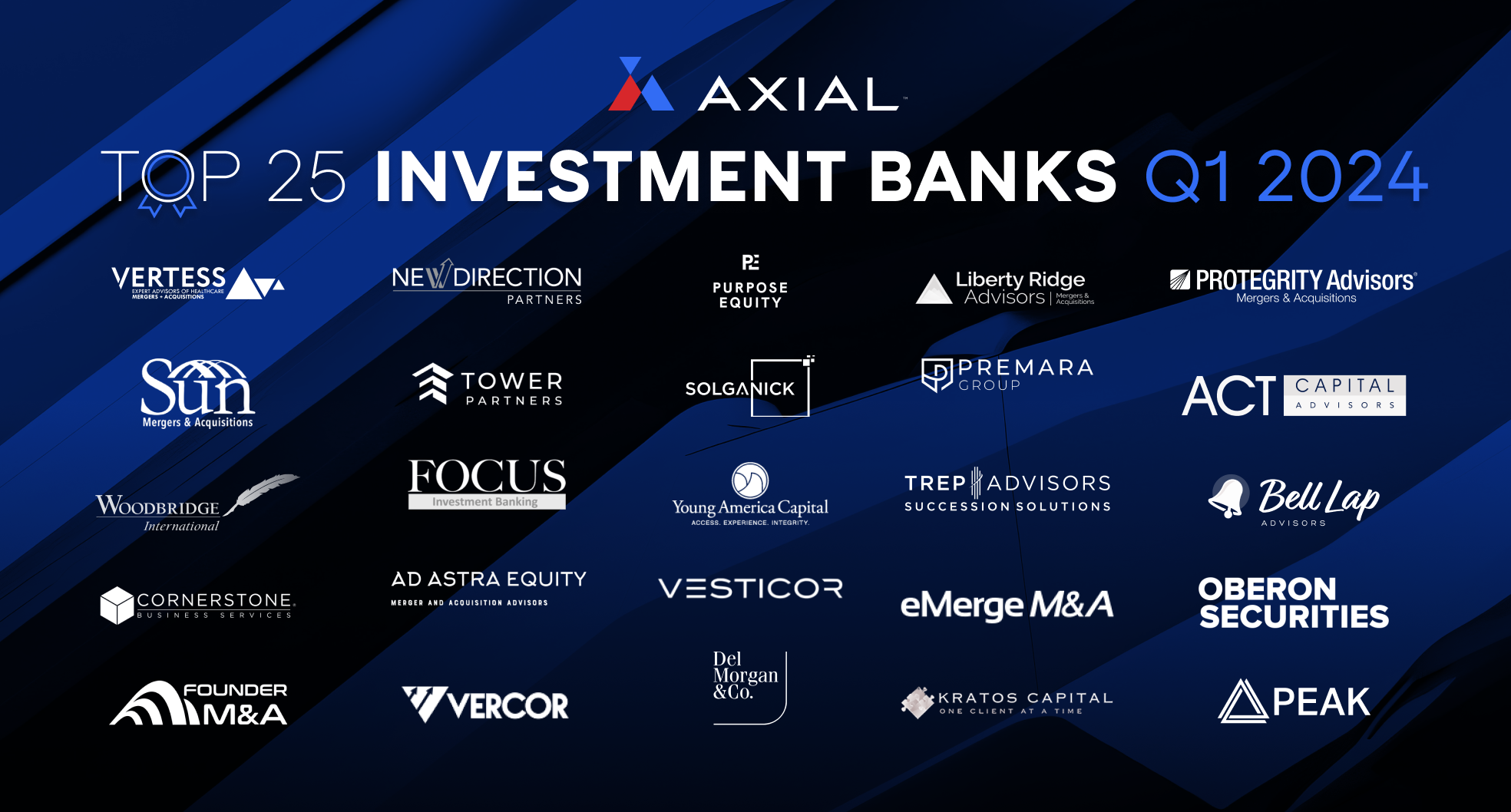
Top 25 Lower Middle Market Investment Banks | Q1 2024
Axial is excited to release our Q1 2024 Lower Middle Market Investment Banking League Tables. To assemble this list, we…
Investment bankers, people acquiring entrepreneurial businesses, or individuals who work for an entrepreneur — anyone who deals with an entrepreneur — would do well to heed the complex drama playing in the inner world of these people; they will profit by looking beyond the surface of things.”
–Manfred Kets de Vries, INSEAD
Every advisor has heard owners refer to their business as their “baby” and talk about how they’ve sacrificed blood, sweat, and tears to make their business a success. For many of these owners, their business is them and they are their business.
This phenomenon has a name — Role Identify Fusion (RIF) — and it is one of four behaviors researchers believe has a direct impact on an owner’s inclination for exit. (The other three are self awareness, work-life balance, and post-exit resilience.)
RIF is the concept of an entrepreneur’s identity as a business owner impinging on their self-identity in their social (non-business owner) roles.
In cases where the owner’s identity is highly fused to their role as owner, answering the question of who they are apart from the business is nearly impossible.
Do all owners develop RIF to the same degree? No, RIF is best conceptualized along a continuum from a healthy self-identity separate from their role identity through to a highly fused role-identity. As an advisor, it’s crucial to understand a client’s degree of RIF and how it might impact their exit inclination.
Consider two owners, both in their early sixties, both founder-owners of $30M/year distribution businesses.
Steve and Dan have both built successful businesses in the same industry and they have both been approached numerous times to consider selling their businesses. As an advisor, the question is: do both Steve and Dan possess the psychological capacity to exit successfully? What might you expect to experience when counseling Steve vs. Dan? What might an acquirer expect to discover about the infrastructure and operations of the business?
The Steves of the world are a dream to work with. They are not afraid of engaging in robust debate or self-reflective analysis and they are able to construct new meaning for themselves beyond their role as owner.
As a result, they are more likely to build a dynamic management team of talented leaders who are empowered assets that push and stretch Steve through healthy conflict. Steve is consistently challenged to grow beyond his comfort zones and embrace change.
As a result, Steve will approach his business exit with much less trepidation or resistance. In fact, Steve is likely to partner with a trusted advisor to help him navigate a thorough exploratory phase so that he is able to build both a future beyond the business and a strategic exit plan that will make the execution phase of the transaction a success.
The Dans of the world can be far more challenging to work with. In all likelihood they will be unable to exit their business without a significant trigger event that forces them to do so.
Dan may say he’s ready to exit, but his advisor will soon find that his words and actions do not align. Dan is not being deceptive, he is simply experiencing a discrepancy that he is unable to overcome. He knows he needs to exit and part of him may even want to exit, but Dan is unable to develop a mental model for a future that doesn’t include his role as owner. This is likely to be expressed organizationally through limited formalized systems and processes, management teams that avoid conflict and embrace artificial harmony, a high degree of tacit knowledge, and skills gaps.
Advisors have two options when it comes to dealing with a person who is highly or very highly fused — the Dans of the world. The first is to run and wait for a trigger event to force the owner to exit. The second is to know what you are dealing with and determine what psychological assets exist that you can leverage to help the owner through what will be a very difficult and emotional transition.
Stay tuned for Part II, in which we provide insights into how advisors can respond proactively to help ensure deal success. In the meantime, download our white paper “The Psychology of Exits” for more.
